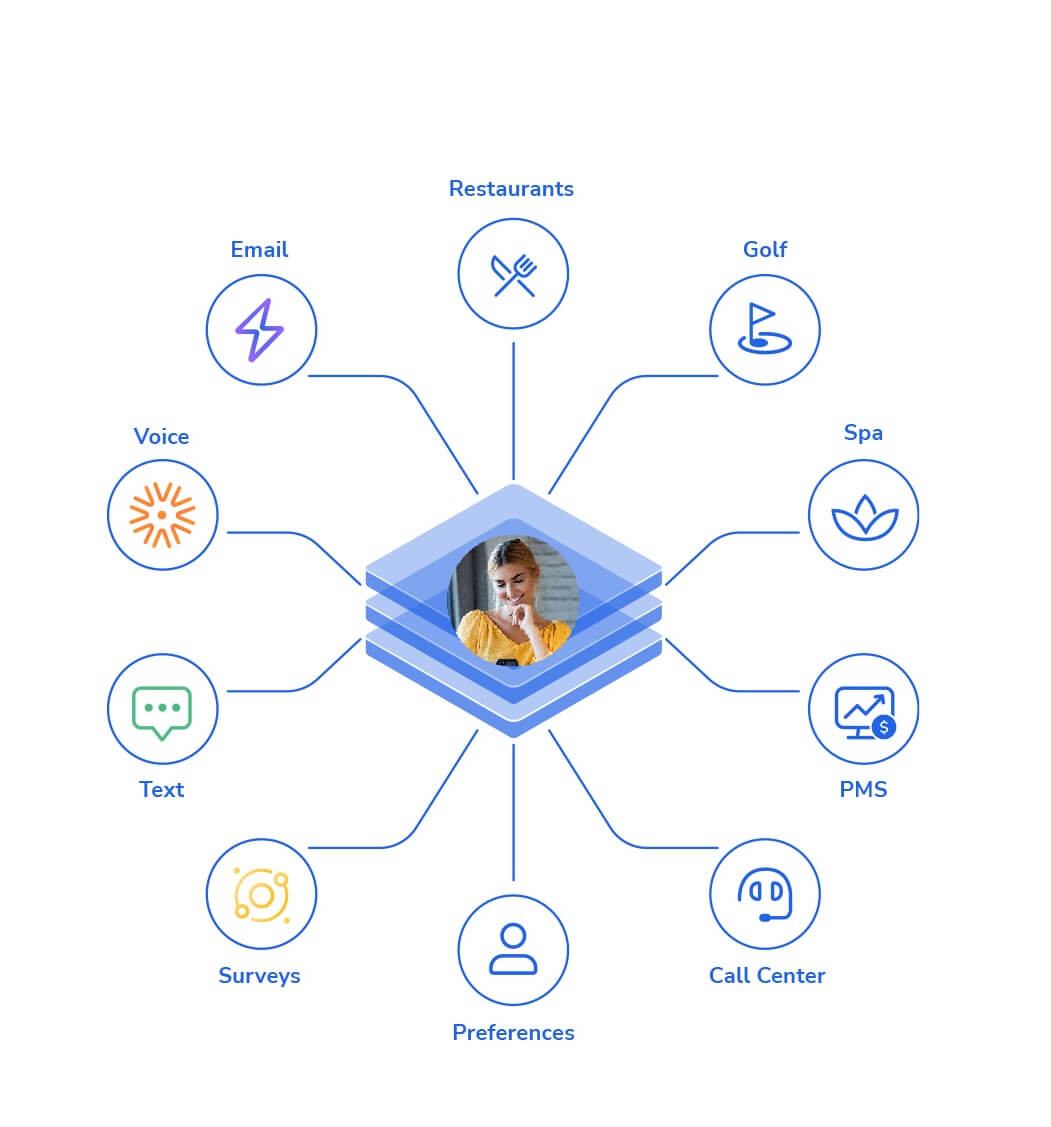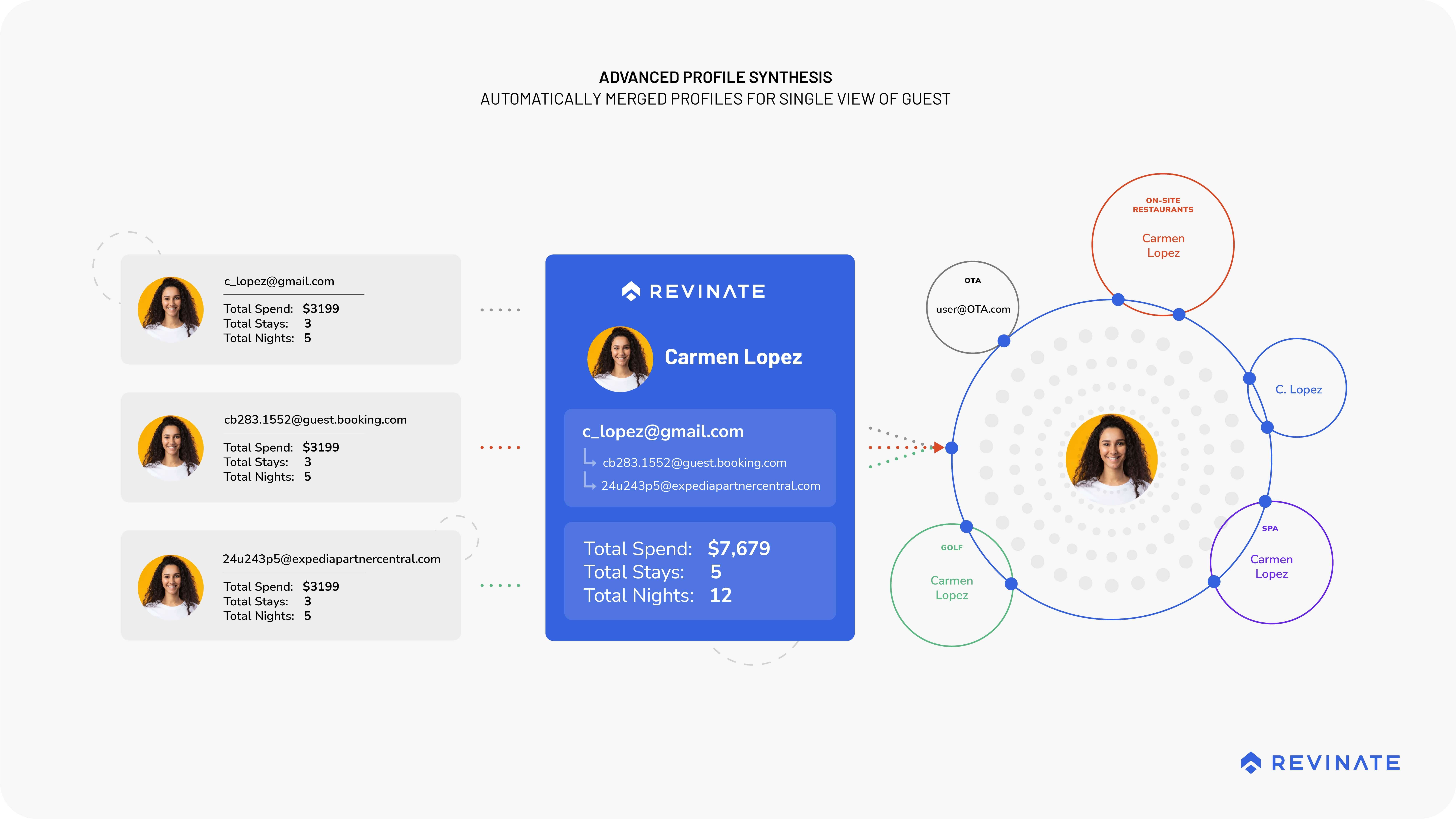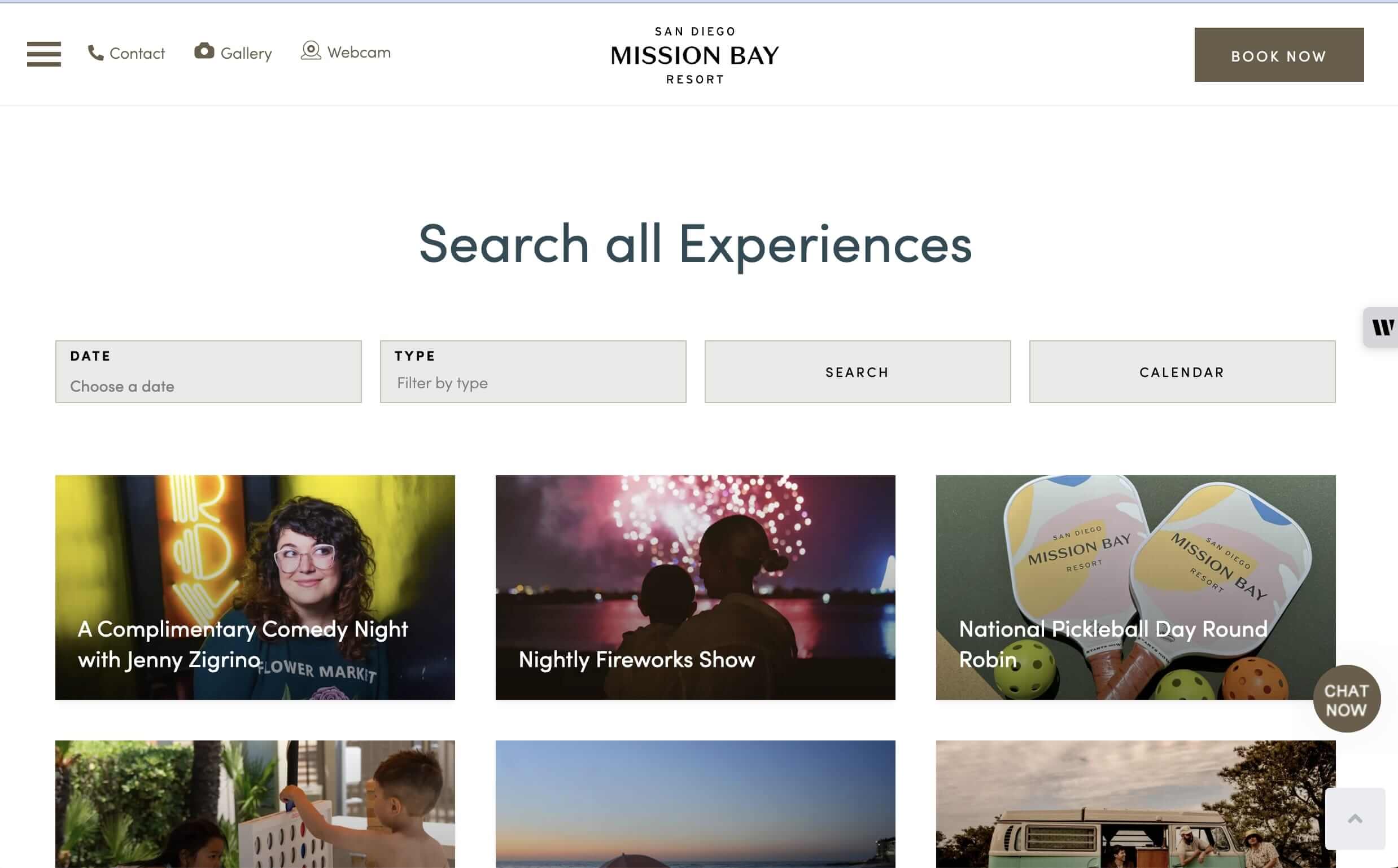The building blocks of a first-party data strategy for hotel revenue
The building blocks of a first-party data strategy for hotel revenue
This article was originally developed and published for Hospitality Net’s Data and Business Intelligence Thematics. Read more here.
Imagine a beautifully crafted mosaic, where each tile—unique in shape, color, and texture—comes together to form a breathtaking masterpiece.
Building a first-party strategy for your hotel revenue is a lot like creating this mosaic. Each piece of information, whether it’s guest data from booking platforms, insights gathered from your CRM, or feedback from surveys, contributes to a rich and comprehensive understanding of guest preferences and behaviors. When these diverse data points are thoughtfully combined, they create a vibrant and intricate portrait that can significantly enhance your marketing efforts and revenue strategies.
Just as a mosaic reveals its beauty through the careful arrangement of individual tiles, a well-constructed data strategy illuminates a clear path to maximizing both guest satisfaction and revenue. The beauty of a mosaic isn’t random; tiles are not placed haphazardly or by chance. Instead, each one is intentionally planned out in advance. A first-party data strategy operates the same way. You must carefully choose what tools and data sources will make up your ultimate strategy. By prioritizing first-party data, you can foster a deeper connection with your guests and build trust—essential for long-term loyalty—without sacrificing the effectiveness of your marketing campaigns.
“Heads in beds” is no longer the mantra of hotel revenue management. Today, understanding and leveraging guest data is critical to unlocking the full potential of Total RevPAR. This approach enables hoteliers to design personalized experiences that resonate with guests, drive higher revenue, and ensure satisfaction throughout their stay.
We’ll walk you through how to assemble first-party and zero-party data into a robust, revenue-generating strategy, and help you create picture-perfect experiences for your guests.
Beyond the basics: Crafting a data-led strategy
You’ve heard it countless times: “Hoteliers need to start gathering first-party data.” Whether it’s at conferences, in blog posts, or on podcasts, the message is clear. But sometimes, we’ve all been guilty of skipping over the substance of what that actually means.
So here’s a quick primer. First-party data is any data that your guests share directly with you — it includes purchase history, stay data, email addresses, web browsing behavior on your brand site, etc. Zero-party data is a sub-category of first-party data, and includes data that your guests share with you in exchange for the promise of a more personalized experience, such as preferences and survey results. Consider too if you are asking guests for their permission to use their data at the property, group or global level. Both types of data are critical for personalization.
Need more of a deep dive? We have a detailed guide to making the most of your first-party data here and an overview of considerations for zero-party data strategies here.
You might be thinking, “Ok, we get it! We need to start gathering first-party data.” However, many overlook that recognizing the importance of first-party and zero-party data is just the first step. You need to consider how to store and activate it throughout the guest journey as part of a comprehensive strategy to increase direct revenue and NOI.
This is where a Customer Data Platform (CDP) comes in. A CDP is the foundational technology that powers a first-party data strategy by both collecting and activating guest data. It does so by bringing in data from multiple sources, unifying disparate data points into comprehensive guest profiles, surfacing insights, and then targeting your guests with personalized messaging across channels.
But let’s start at the beginning: the top sources for zero-party and first-party data.
Top sources for zero-party and first-party data
Your hotel offers guests more than just a place to sleep — it’s a hub where guests can dine at your restaurants, unwind in your spa, and enjoy themselves using your amenities. At every interaction, your guests share valuable data that can be pieced together to reveal crucial insights to help you improve the guest experience while driving more direct revenue.

Take, for instance, a returning guest, Carmen Lopez, who will be visiting next month. Here’s a summary of her past stay data:
- PMS data: Your MEWS PMS shows her stay dates and room type past visits and for her upcoming reservation.
- Folio data: Your MEWS Folio system provides detailed data including her in-room dining and room charges from her previous stays.
- Spa data: Carmen also visited your spa during her last stay, and Book4Time has her spa reservation details, including the package she reserved and the booking channel.
- Restaurant data: Carmen and her husband Marco enjoyed a romantic dinner at your property during her last stay. Your SevenRooms restaurant system has her reservation date, F&B revenue, and notes related to their visit.
- Survey data: Revinate Guest Feedback shows that Carmen’s NPS score is 9, and she left a five-star Tripadvisor review after her last stay
- Call center data: Notes from the agent left in Revinate Reservation Sales reveal that Carmen is a light sleeper and prefers rooms on upper floors away from the elevator.
- Email data: Carmen subscribes to your hotel newsletter, and Revinate Marketing shows that she booked her most recent stay after clicking on the newsletter’s featured package.
But it’s your Revinate CDP that assembles all of these disparate data points into a single, comprehensive guest profile that gives you the full picture of Carmen’s journey with your hotel.
These insights are crucial for tailoring her upcoming stay — and we’ll dig into how you can activate them in the next section. But unfortunately, many hotels can’t fully activate their data if they are still using a basic CRM, and as a result, all of these insights are stored in separate, siloed systems, complicating the quest for a unified view.
Data silos can significantly impact your bottom line. A study by Gartner indicates that organizations can lose as much as 20% in revenue by failing to fully leverage their data, translating to potentially $15 million each year.
A CDP can help you collect and clean all of the first-party data sent by different systems. Book4Time, SevenRooms, and MEWS all send guest profile data to the Revinate CDP.
With a basic CRM, although these profiles belong to Carmen, inaccuracies can arise that make it seem like she’s not the same person. This can lead to missed personalization and revenue opportunities. Merging guest profiles from different systems is a complex task that requires identity resolution, i.e. advanced machine learning to cleanse and dedupe data effectively at both the property and group levels. Simple discrepancies, such as a typo (e.g., “Karmen” instead of “Carmen”) or variations in email addresses, can disrupt proper connections in your CRM.

Read more about the differences between CDPs and CRMs in the Hotel Yearbook, “Evolving from CRM to CDP: What got us here won’t get us there.”
Hitting the right audience with advanced segmentation
Once you have all of Carmen’s various data points discussed above collected and synthesized in a CDP, they are available for you to use to send targeted messaging. Based on just a few of these touchpoints, you can quickly see that Carmen would likely be interested in a number of upsells — perhaps at the spa, or for an upgraded room on a quieter floor. And thanks to automation, personalized upsells can be sent to Carmen (and any guests who share these characteristics) without additional staff labor.
This time, Carmen is visiting with her work girlfriends and wants to enjoy a girls’ night dinner. She booked her reservation using her work email, but if her profiles aren’t merged in your CDP, you could miss the opportunity to send her a special dinner offer or upsell a relaxing spa package for her and her friends.
Before she arrives, you can send a pre-arrival email featuring customized spa and dinner options that cater to her plans with her friends, rather than just the usual reservations for two from her last stay.
By leveraging this data across multiple channels, hotels can elevate guest experiences, delighting them throughout their booking and stay journey. Effective communication through their preferred channels ensures that guests not only stay, but also fully immerse themselves in the property’s offerings.
3 examples of campaigns powered by first-party and zero-party data
Now we’re at the fun part: activating guest data! This is where you can unleash your creativity with your campaigns. Don’t forget that trial and error are all part of the journey. You can activate your first-party data across various channels, such as:
- Email: By 2025, email marketing revenue is projected to hit $13.7 billion. Email continues to be a top channel for hoteliers when communicating with guests.
- Voice: When someone calls,you want your agents to quickly access all available data on that individual to give the best response to their inquiry — and secure a reservation. And if you’re making outbound call campaigns, you want to utilize all the data at your disposal. With a CDP, you can have access to all this data in one single location.
- Messaging: A recent survey found that 65% of people open a text message within 5 minutes of receiving it. Messaging can be automated through a bot or handled by your call center, but it’s vital to connect this channel to your CDP for access to critical customer information.
We have some examples to get you inspired.
No more loyalty points: Ennismore
Here’s a fun fact: loyalty points have been around for 40 years! Surprised?
The concept of loyalty programs has changed significantly since then. Today’s guests don’t want the traditional points system — they prefer instant rewards. At Ennismore, they took note and launched their unique loyalty program called Dis-loyalty.

Yes, you read that correctly: Dis-loyalty. This innovative travel and food membership program was created by Ennismore, the hospitality company behind brands like 25hours Hotels, Mama Shelter, The Hoxton, Mondrian, and SLS. Unlike conventional loyalty programs, Dis-loyalty encourages members to discover new destinations and rewards them for being “disloyal.”
So, how did Ennismore incorporate first-party data into its loyalty strategy? They harnessed guest data across its portfolio to target past guests and website signups promoting the Dis-loyalty program. The campaign spanned multiple channels, including email, digital, and social media. Recognizing the importance of personalization, Ennismore customized its offers by segmenting its Revinate database by location and language.

Going beyond rooms: Mission Bay Resort
We all know that guest expectations for unique, memorable experiences are growing. By using a CDP to ingest data across all touchpoints—such as web, behavioral, and transaction-based data—you can begin curating personalized experiences for your guests and anticipating their needs.
Take Mission Bay Resort in San Diego as an example. Its website features a page with all of the hotel’s on-property experiences and activities, powered by Way. All the booking data from this page is connected to Revinate’s API, capturing details such as the types of activities guests are booking and their total spend. This enables the hotel team to send targeted campaigns to these guests based on their previous interactions.

Here’s an example of how data from the activities page is being used: Mission Bay Resort sent an email campaign to a targeted group of guests, utilizing the data collected from their website. Knowing these guests lived locally and had previously shown interest in comedy events, the hotel led with an offer for an upcoming comedy night, creating a personalized and engaging email experience.
Subject line: September’s Lineup at San Diego Mission Bay Resort
Segmentation: Website opt-ins, event signups, guests within driving distance

Understanding the true lifetime value of guests: Rowhill Grange Hotel
Remember our friend Carmen? When you collect her guest data from multiple sources, including your restaurant and spa, not just her room booking, you can understand her true lifetime value. Now, apply this to all the guests in your hotel.
This advanced level of data helps hoteliers target the right customers who will spend on extra services, resulting in better returns on investment.
For instance, the UK brand Rowhill Grange Hotel successfully drove room revenue with their spa offerings. They sent a campaign to spa bookers and local hotel guests, offering a full spa day and a £200 credit for treatments. The offer also included food and beverage options, allowing guests to choose between a two-course lunch or afternoon tea. This campaign not only boosted spa bookings, but also drove hotel reservations, with guests booking mostly one-night stays, and some opting for two-nights.
Subject line: ✨ 30% off our Banish The Blues Spa Day! ✨
Segmentation: SPA visitors and local hotel guests – 20 miles from hotel
Campaign highlights:
- Leading with the unique spa experience on-property
- F&B offer included

Building revenue through first-party data
The next time you hear someone say, “Hoteliers need to start gathering first-party data,” at a conference or see a post about it on LinkedIn, we hope you’ll feel empowered to engage in the conversation. With the right tools and partners, collecting, storing, and activating first-party data becomes easier and opens up opportunities to maximize revenue.
By leveraging first-party data effectively, you can create personalized marketing campaigns that resonate with your guests, encouraging loyalty and repeat visits. Understanding guest preferences allows you to tailor offerings and communicate in a way that feels relevant and personal. As you invest in a data-driven strategy, you’re not just enhancing operations, you’re also securing the future success of your hotel in an increasingly competitive landscape.
Related Posts
This site is protected by reCAPTCHA and the Google Privacy Policy and Terms of Service apply. View our Terms & Conditions here. *Required fields.



